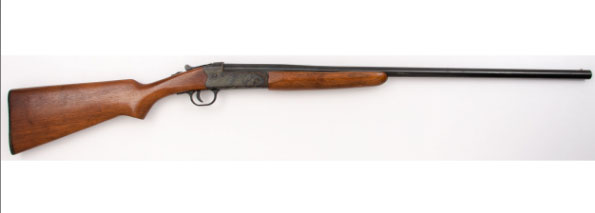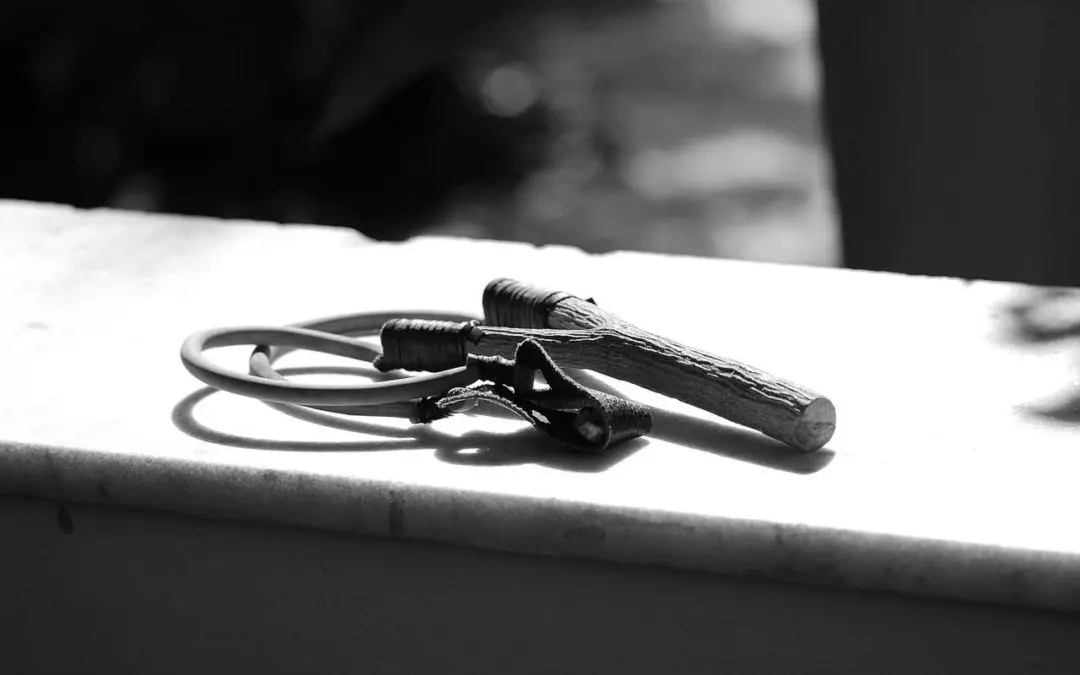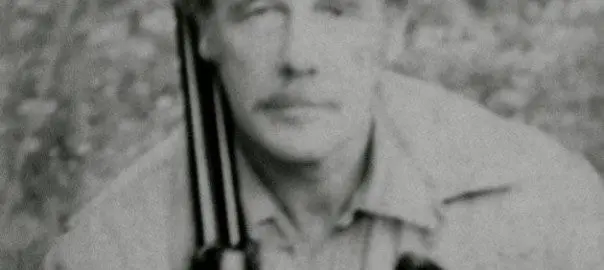 When it comes to overall impact in terms of being indelibly planted in my memory though, nothing quite matches ownership of my first gun. There had been sling shots aplenty, cap pistols, and a treasured BB gun that saw a great deal of duty. Still, they weren’t the real McCoy. I couldn’t go hunting with them and expect to bring home a rabbit or squirrel, and for all that the BB played a central role in getting me ready for a gun and hunting, it didn’t match up to my fervent desires to own a “real” gun.
When it comes to overall impact in terms of being indelibly planted in my memory though, nothing quite matches ownership of my first gun. There had been sling shots aplenty, cap pistols, and a treasured BB gun that saw a great deal of duty. Still, they weren’t the real McCoy. I couldn’t go hunting with them and expect to bring home a rabbit or squirrel, and for all that the BB played a central role in getting me ready for a gun and hunting, it didn’t match up to my fervent desires to own a “real” gun.
The circumstances surrounding that joyous moment when I become the proud possessor of a real gun involved a tiny bit of trauma mixed in with a marvelous measure of pure delight. I was given the gun, a Savage Model 220A 20 gauge, for Christmas when I was ten or eleven years of age. As fate would have it, that was the only Christmas of my life, right up until I was married at the age of twenty-five, spent away from the heart of North Carolina’s Smokies where I was bred and born.
Mom and Dad, no doubt feeling a bit guilty as the result of one Yuletide after another spent in the bosom of the mountains, decided to travel to Winston-Salem and spend the holiday with my maternal grandparents. Wisely, the gun I was to receive was left at home. I was simply given a box of shells along with a card indicating what awaited me upon our return to the high country. Never has a youngster been more anxious to return to his highland homeland, and even the throes of homesickness that seized me during the first portion of my freshman year in college paled in comparison with my desire to return to the mountains that Christmas holiday. The family headed back home on December 26, but the 36 hours or so between when I learned I was the owner of a new shotgun and the moment I actually held it in my hands was an extended period of marvelous misery.
By most standards of measurement, the little 20 gauge wasn’t anything special. The single-barrel shotgun, choked tight as a miser’s purse, retailed for less than $30 in the mid-1950s. Even today with some searching you can find a perfectly functional used one in the $50 to $100 price range. Dad bought it new, possibly from the Sears & Roebuck catalog or else through Doc Woody, a sportsman/dentist who at the time owned a small local sporting goods store. Never mind its cash cost, in my mind’s eye the gun was and remains priceless.
I already had considerable experience hunting with a borrowed .410, and I had done some plinking with a .22 rimfire, so coming into the gun’s possession, in terms of familiarity and training, wasn’t exactly venturing into a brave new world. There were striking differences though, between the loaner and MY gun. The single-shot .410 had been a hammer gun, whereas the key attribute of the Savage Model 220A (which came in various gauges, barrel lengths, and ultimately, with a series of letters after the number as the basic model was upgraded and improved), at least in the eyes of the maker’s advertising gurus, was that it was one of the first single-barrel hammerless shotguns to be mass produced. It had a thumb safety that was far easier to deal with than a stiff hammer that could be devilishly awkward when the matter at hand involved a fast fleeing rabbit or a covey of quail taking wing.

For years I missed far more cottontails and bobwhites than I hit with the new gun, thanks to the tight choke. But at least I could now consistently get off a shot while those quarries were in range without fumbling with a hammer. Dealing with bushytails was another matter entirely. The super-tight choke worked wonders on a hidden squirrel high up in an oak or hickory with only a portion of its head showing. So long as I made myself wait until the animal was still before shooting, the little 20 gauge was deadly. I soon became a juvenile squirrel-killing machine. Right up until graduation from high school, October twilights would find me walking through the streets of Bryson City, my home town, with squirrel tails proudly sticking out of multiple pockets. That was no accident. I arranged displays of my success as carefully as a teenage girl heading out on her first date dealt with matters of makeup. It’s also a telling commentary on changing times. Imagine a youngster in today’s world walking a small-town street carrying a gun. Law enforcement would descend on him like the Biblical plagues.
The gun was not only easy to use and highly functional; it was the essence of simplicity when it came to breaking it down for cleaning, to insert a shell or even to blow through the open barrel to call dogs. Pressing down and pulling on the forend readily released it, and then all that was then necessary to remove the barrel was to push the lever to the side.
Light weight in a gun can be a mixed blessing, and such was the case with my Savage 220A. Carrying it over the course of a long day afield, even for an undersized boy, presented no problems. It also had good balance and went smoothly to my shoulder. On the other hand, its thin pad did precious little when it came to absorbing recoil and even with low brass shells the gun kicked like a malcontent mule. If you mistakenly got the gun’s butt on your biceps rather than snug in the armpit where it belonged, an impressive bruise was the inevitable result.
By the time I finished high school, the gun showed plenty of wear. Countless encounters with blackberry briars and floribunda roses had taken their toll on the walnut stock and forend, and no amount of rubbing with furniture polish or linseed oil could change that. Similarly, the bluing of the metal had long since given way to a shine closely resembling the color of Momma’s freshly polished silver all ready for her to host a special event. Some distinctly amateurish gunsmithing work on the screw holding the lever in place had left tell-tale scars further marring the scattergun’s appearance.
Still, faded beauty notwithstanding, the gun continued to work just fine. It saw serviceable and memorable duty not only through my youth but well beyond. One particularly cherished example came on a quail hunt, never mind how unsuitable the shotgun might have been for that sport, with a newly acquired father-in-law. This was back when there were still wild birds aplenty, and we bonded, thanks to several covey finds, a staunch pointer and shared passion, in a manner that up to that point had seemed impossible.
He flat-out shamed me, in terms of birds in the game bag, with his old humpback semiautomatic and its improved cylinder choke. More significantly, though, at the end of the day’s hunting, he no longer thought of me as a hillbilly reprobate with few if any redeeming features who had taken his only child.
Then there was the matter of the shotgun and meat on the table. During four lean years of graduate school, where pizza once monthly equated to haute cuisine and when my wife and I ate enough tuna casseroles to last a score of lifetimes, that little 20 gauge gave us squirrels and rabbits, buttressed by gravy, sweet potatoes and biscuits on the side. Never have I eaten more welcome or meaningful fare. Many years later, when I owned other guns but remained firmly caught in the grip of nostalgia, I used the gun in the accomplishment of another landmark event in my sporting life—killing my first wild turkey.
Today, the Savage 220A rests in honorable retirement alongside another shotgun filled with memories and meaning, the Ithaca 12 gauge double barrel Daddy used through all the years of my youth that I inherited. I look at the two guns, now located in a gun cabinet Daddy crafted, on a regular basis. That simple act takes me back down country roads leading to old farms, abandoned fields, hardwood ridges, and rhododendron-lined spring seeps where we hunted rabbits, quail, squirrels and grouse. The time travel is gratifying and occasionally, as a cherry atop a lifelong hunter’s sundae, I take one of the guns from the case and carry it hunting.
My suspicion is that countless other sportsmen harbor similar memories of their first gun. If so, they are blessed, and if perchance they still own the gun, they are rich with a tangible, touchable and deeply meaningful link to their youth. Never mind what Thomas Wolfe wrote, with your first gun you can go home again.
This piece from Sporting Classics’ Editor-at-Large and Book Columnist Jim Casada is a shortened version of a chapter in his forthcoming book, A Smokies Boyhood and Beyond: Mountain Memories, Musings, and More, which is to be published by the University of Tennessee Press later this year. To be notified when the book appears, or to sign up for a free subscription to Jim’s monthly e-newsletter, contact him at jimcasada@comporium.net or visit www.jimcasadaoutdoors.com.




